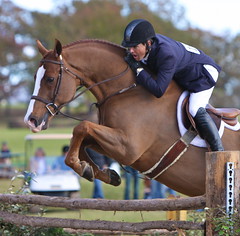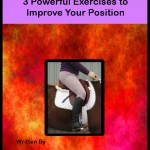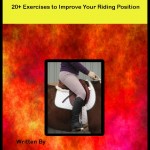The Results are In!

The results of my survey are in…
Question 1) Which should place higher?
The response with the highest percentage is:
- 68% thought adding strides in a line (putting 5 strides instead of 4 strides) should place over leaving out strides.
- 32% thought that leaving out strides should place higher.
This question also invited a lot of responses:
– Some people identified that they thought that adding is safer particularly in wet conditions. Others explained that it wasn’t a completely black and white situation “i.e. 3 out-of-control strides or 5 barely alive, barely going to make it to the fence strides”. As can be seen from this simple question the entire flavour of the round has to be considered.
It is a requirement that the courses for hunters show the distance between fences. Take a look at the posted courses and learn how to determine how many strides are being asked for and the stride length that the course is set on.
![]() photo credit: Hunter-Desportes
photo credit: Hunter-Desportes
Each stride may be predetermined to be 12 ft and at some larger shows the go as long as a 13 ft stride length. At local and in house shows a stride length of 11 ft or even 111/2 ft is used. This means that a line of jumps 60 feet apart would be done in 4 – 12 ft strides. If it were set on a 13 ft stride the distance for 4 strides would be posted as 65 feet.
If a large horse and a small horse go around the same course and the smaller horse adds in the line and jumps brilliantly, and the large horse jumps in poor form… which would you place higher?
When judging you must consider the level of the show, and the class specifications. A novice class with a small horse at a local show may be forgiven whereas it is the responsibility of the rider to choose a mount suitable for the level of show. If that rider wants to show at recognized shows in Florida then a suitable mount should be obtained.
Question 2) Which should place higher?
The response with the highest choice was:
- 75% thought that a change in trot through the corner should place higher than keeping the wrong lead
- 25% thought that keeping the lead should place higher.
The responses to this question raised the issue of balance, and understanding of leads. People who left descriptions highlighted the importance of novice horses maintaining a balance through the corner and of novice rider understanding the necessity of the correct lead around the corner.
![]() photo credit: dregsplod
photo credit: dregsplod
It is important to identify that these horses will be placed only if necessary. In novice classes it should be identified in the class specifications if changes through trot are permitted. Horses performing correct lead changes will ultimately be placed over those horses that trot to get the lead.
When considering the corners of the hunter ring there are many options available:
- getting the correct lead off of the fence – best
- getting a flying lead change – best
- getting the front lead followed by a disunited canter and then switching to the correct lead in the back
- maintain the wrong lead through the corner
- keeping the disunited canter then switching to the wrong lead
- trot to get the lead
Breaking to a trot is considered a major fault and will be scored as such (unless it is permitted in the class specifications)
Question 3) Which should place higher?
The response with the highest number of choices was:
- 81% thought a late change should place higher than no or poor finishing circle
- 19% thought that no or poor finishing circle should place higher.
As one respondent aptly put “the lead change at least indicates some level of planning. The finishing circle is the icing on the cake”. I put this question because I wanted to say that the judging of hunters starts as soon as they enter the gate and continues until they leave. Completing a finishing circle adds flow to the round and also trains the horse to pass the in-gate rather than stopping in a heap on its way out.
Have something that you want to discuss? Drop me a line and we can post your questions.
 Try these three powerful exercises to get strengthen your position.
Try these three powerful exercises to get strengthen your position.
